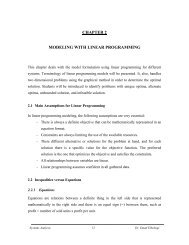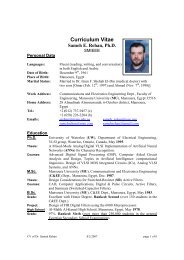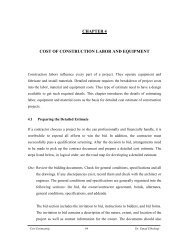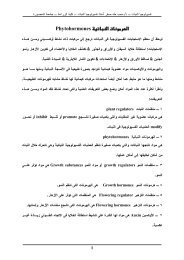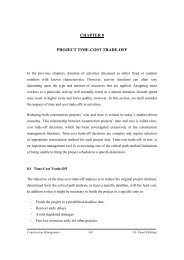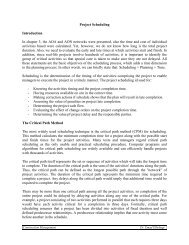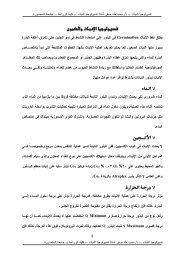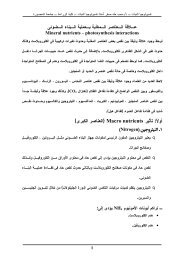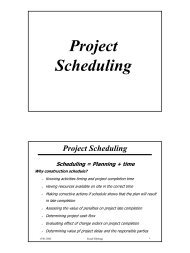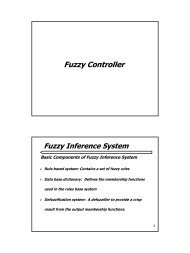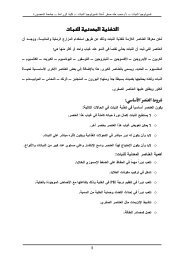Project Time-Cost Trade-Off 7.1 Introduction In the previous chapters ...
Project Time-Cost Trade-Off 7.1 Introduction In the previous chapters ...
Project Time-Cost Trade-Off 7.1 Introduction In the previous chapters ...
Create successful ePaper yourself
Turn your PDF publications into a flip-book with our unique Google optimized e-Paper software.
- Using materials with faster installation methods.- Using alternate construction methods or sequence.7.3 Activity <strong>Time</strong>-<strong>Cost</strong> Relationship<strong>In</strong> general, <strong>the</strong>re is a trade-off between <strong>the</strong> time and <strong>the</strong> direct cost to complete an activity; <strong>the</strong>less expensive <strong>the</strong> resources, <strong>the</strong> larger duration <strong>the</strong>y take to complete an activity. Shortening <strong>the</strong>duration on an activity will normally increase its direct cost which comprises: <strong>the</strong> cost of labor,equipment, and material. It should never be assumed that <strong>the</strong> quantity of resources deployed and<strong>the</strong> task duration are inversely related. Thus one should never automatically assume that <strong>the</strong>work that can be done by one man in 16 weeks can actually be done by 16 men in one week.A simple representation of <strong>the</strong> possible relationship between <strong>the</strong> duration of an activity and itsdirect costs appears in Figure <strong>7.1</strong>. Considering only this activity in isolation and withoutreference to <strong>the</strong> project completion deadline, a manager would choose a duration which impliesminimum direct cost, called <strong>the</strong> normal duration. At <strong>the</strong> o<strong>the</strong>r extreme, a manager might chooseto complete <strong>the</strong> activity in <strong>the</strong> minimum possible time, called crashed duration, but at amaximum cost.<strong>Cost</strong>Crash duration&Crash costNormal duration&Normal cost<strong>Time</strong>Figure <strong>7.1</strong>: Illustration of linear time/cost trade-off for an activityThe linear relationship shown in <strong>the</strong> Figure <strong>7.1</strong> between <strong>the</strong>se two points implies that anyintermediate duration could also be chosen. It is possible that some intermediate point mayrepresent <strong>the</strong> ideal or optimal trade-off between time and cost for this activity. The slope of <strong>the</strong>line connecting <strong>the</strong> normal point (lower point) and <strong>the</strong> crash point (upper point) is called <strong>the</strong> costslope of <strong>the</strong> activity. The slope of this line can be calculated ma<strong>the</strong>matically by knowing <strong>the</strong>coordinates of <strong>the</strong> normal and crash points.<strong>Cost</strong> slope = crash cost – normal cost / normal duration – crash durationAs shown in Figures <strong>7.1</strong>, 7.2, and 7.3, <strong>the</strong> least direct cost required to complete an activity iscalled <strong>the</strong> normal cost (minimum cost), and <strong>the</strong> corresponding duration is called <strong>the</strong> normalDr. Emad Elbeltagi



